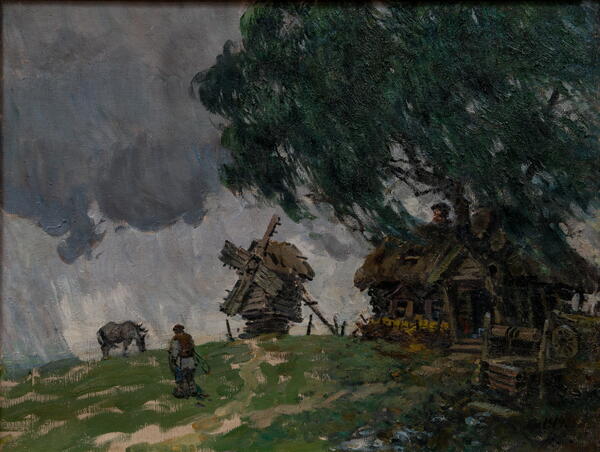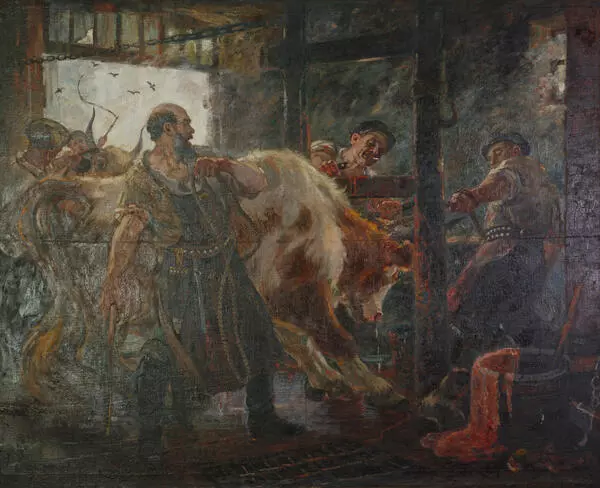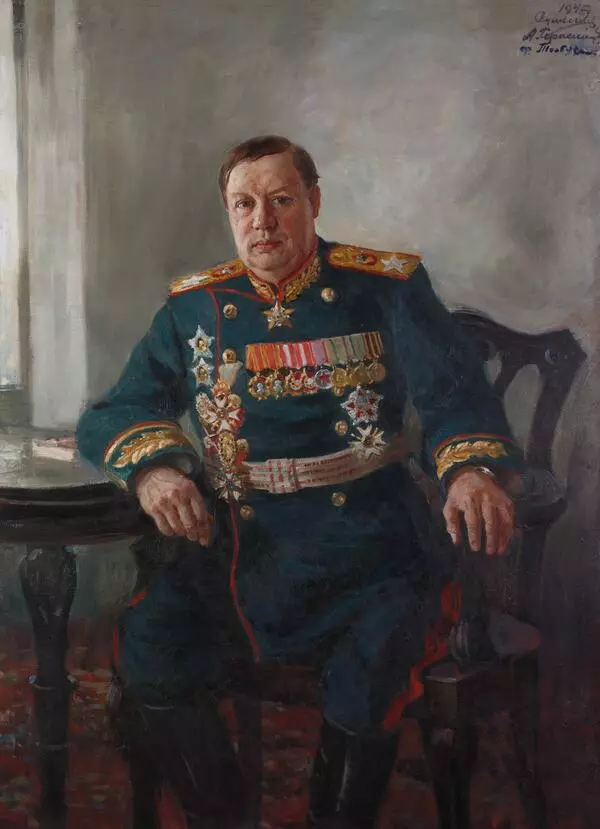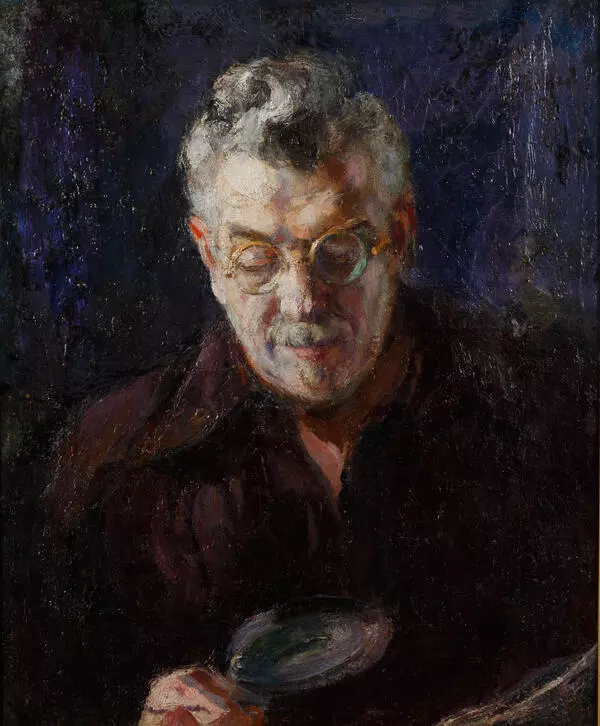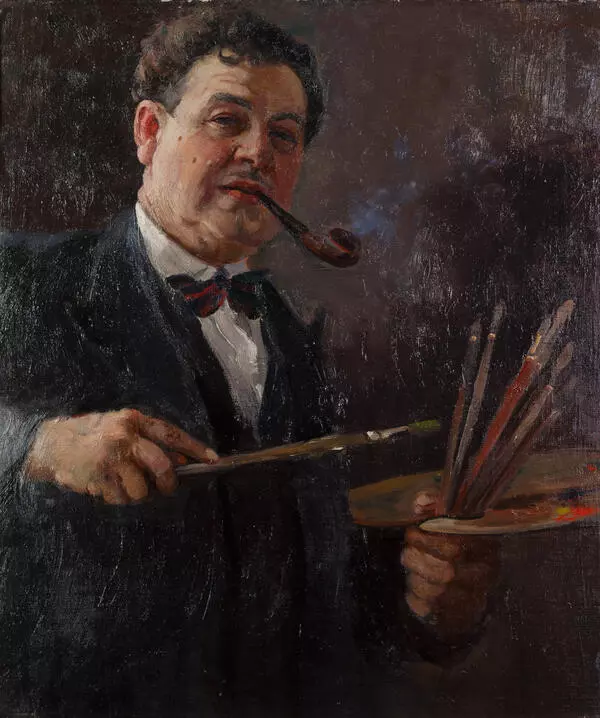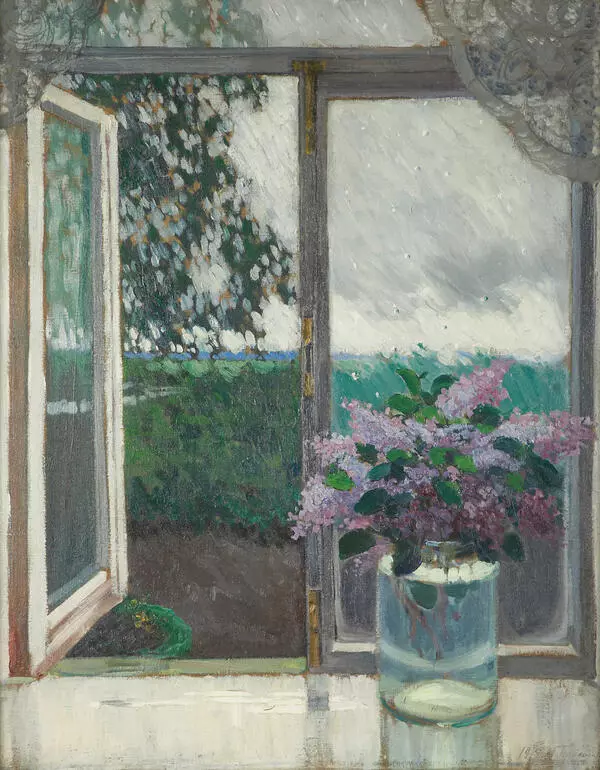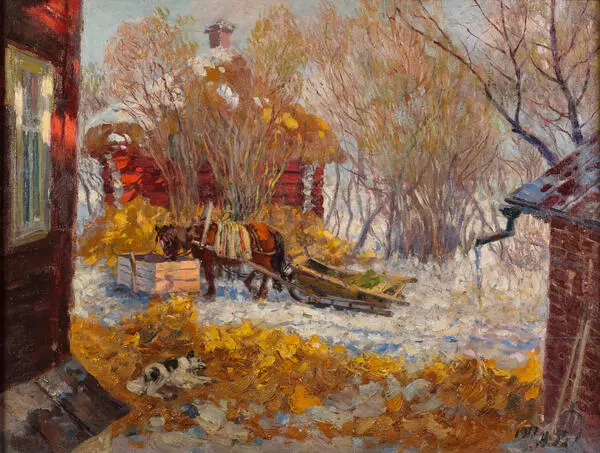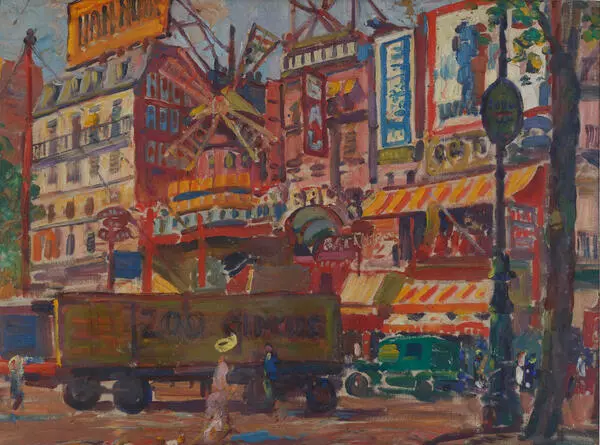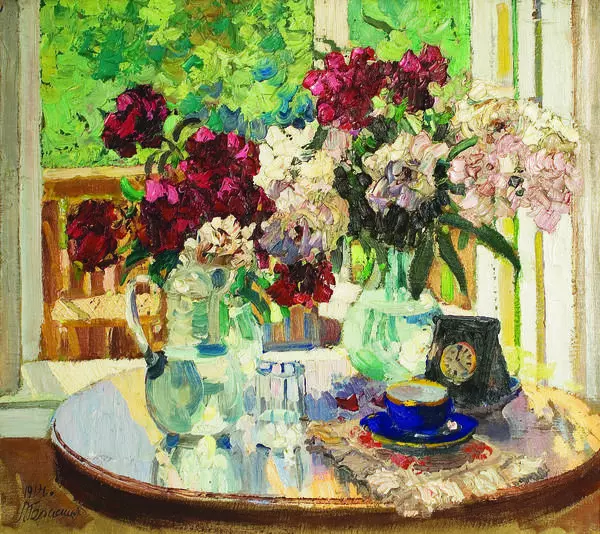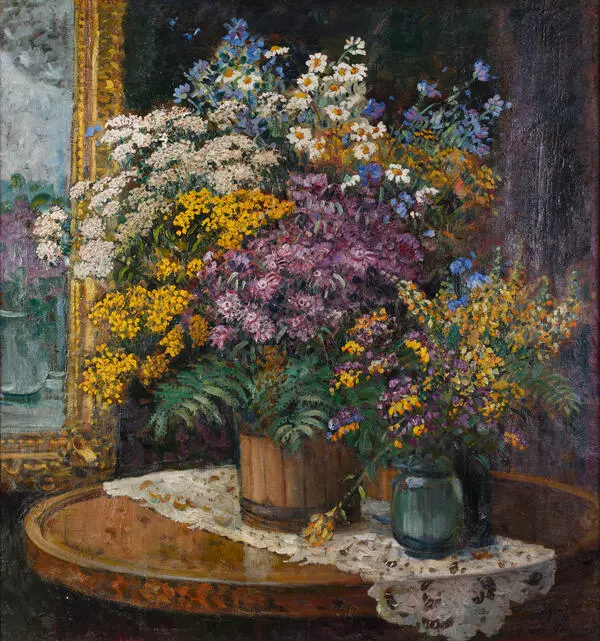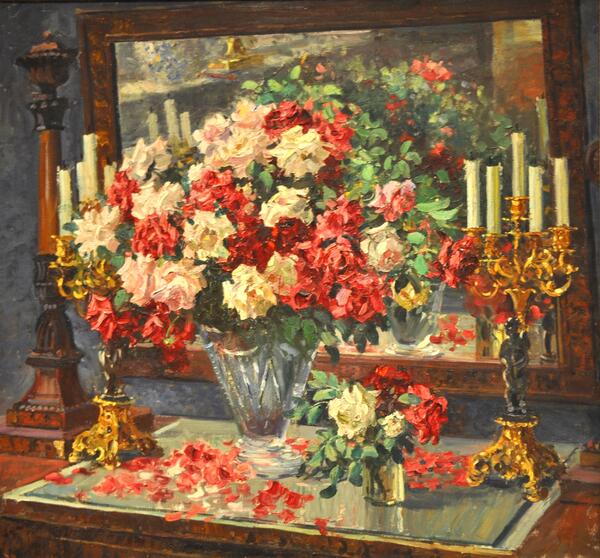Alexander Gerasimov’s painting called “The Endmost Hut” is interesting primarily because the painter expresses two motifs using the same artistic means. Many classical works of art feature a thunderstorm as a symbol and a plot element. Alexander Gerasimov endowed the natural phenomenon of a thunderstorm with a special meaning: the year 1914 marked the beginning of the First World War (and a thunderstorm for the society); at the same time, the thunderstorm, presented on the canvas itself, is also a powerful symbol that reflects the idea of a deep connection between art and nature. The artist created a seamless combination of these two motifs, which allowed him to express his attitude toward the Russian reality of the early 20th century.
On the canvas, the artist depicted a view of a typical Russian village: a dilapidated wooden hut, an old mill next to it and a small well. The artist painted the chimney and the dilapidated roof in a meticulous way. They convey the characteristic ambiance of poverty-stricken villages. The composition of the painting “The Endmost Hut” is built in such a way that the viewer’s gaze automatically travels from the hut to the gray thunderclouds, and this panorama emphasizes the mood of Gerasimov’s landscape. The canvas is dominated by dark gray tones with occasional speckles of green and brown, which expresses the atmosphere of a cloudy day. The cold gray sky hints at an approaching thunderstorm. The gray angry clouds move swiftly across the sky. The willow branches flutter in the wind. Only a mill and a lonely hut are left to resist the raging elements. A figure of a peasant walking toward his horse against the backdrop of cold rain seems miserable and forlorn.
Alexander Mikhailovich Gerasimov used the pictorial space skillfully: he painted chaotically scattered grass and sandy bare spots with broad strokes. This creates the impression that everything was swept away and scattered by the flowing wind. The artist managed to reflect the sadness of the forces of Russian stormy weather. The elongated image seems to take on features of a panorama, and the bending tree directs the viewer’s gaze not toward the horizon but along the width of the image. The picture captures attention with its uncommon plot and expressive interpretation.
On the canvas, the artist depicted a view of a typical Russian village: a dilapidated wooden hut, an old mill next to it and a small well. The artist painted the chimney and the dilapidated roof in a meticulous way. They convey the characteristic ambiance of poverty-stricken villages. The composition of the painting “The Endmost Hut” is built in such a way that the viewer’s gaze automatically travels from the hut to the gray thunderclouds, and this panorama emphasizes the mood of Gerasimov’s landscape. The canvas is dominated by dark gray tones with occasional speckles of green and brown, which expresses the atmosphere of a cloudy day. The cold gray sky hints at an approaching thunderstorm. The gray angry clouds move swiftly across the sky. The willow branches flutter in the wind. Only a mill and a lonely hut are left to resist the raging elements. A figure of a peasant walking toward his horse against the backdrop of cold rain seems miserable and forlorn.
Alexander Mikhailovich Gerasimov used the pictorial space skillfully: he painted chaotically scattered grass and sandy bare spots with broad strokes. This creates the impression that everything was swept away and scattered by the flowing wind. The artist managed to reflect the sadness of the forces of Russian stormy weather. The elongated image seems to take on features of a panorama, and the bending tree directs the viewer’s gaze not toward the horizon but along the width of the image. The picture captures attention with its uncommon plot and expressive interpretation.

